

| 2017 MadRite Prototype #1 |
||||||||||||||||||||||||||||||||||||||||||||||||||||||||||||||||
 The Madrite guitar started off in 2017 with me being into the B-52's a bit, and getting G.A.S. for a Mosrite. For you to understand why I undertook building my own clone from scratch with my own featureset....rather than buying a production copy or actual Mosrite, as Mosrites are very interesting (and expensive) guitars, and I had some of my own ideas and plenty of parts. Honestly, this whole build cost me about $65 total - as I used a lot of stuff I already had around the house. That's a far cry from the $400+ for an Eastwood copy, or the $3000+ for a Mosrite guitar. I had the resources, and the time with the wife out of town for a few days, so all the below work later - here I was. 
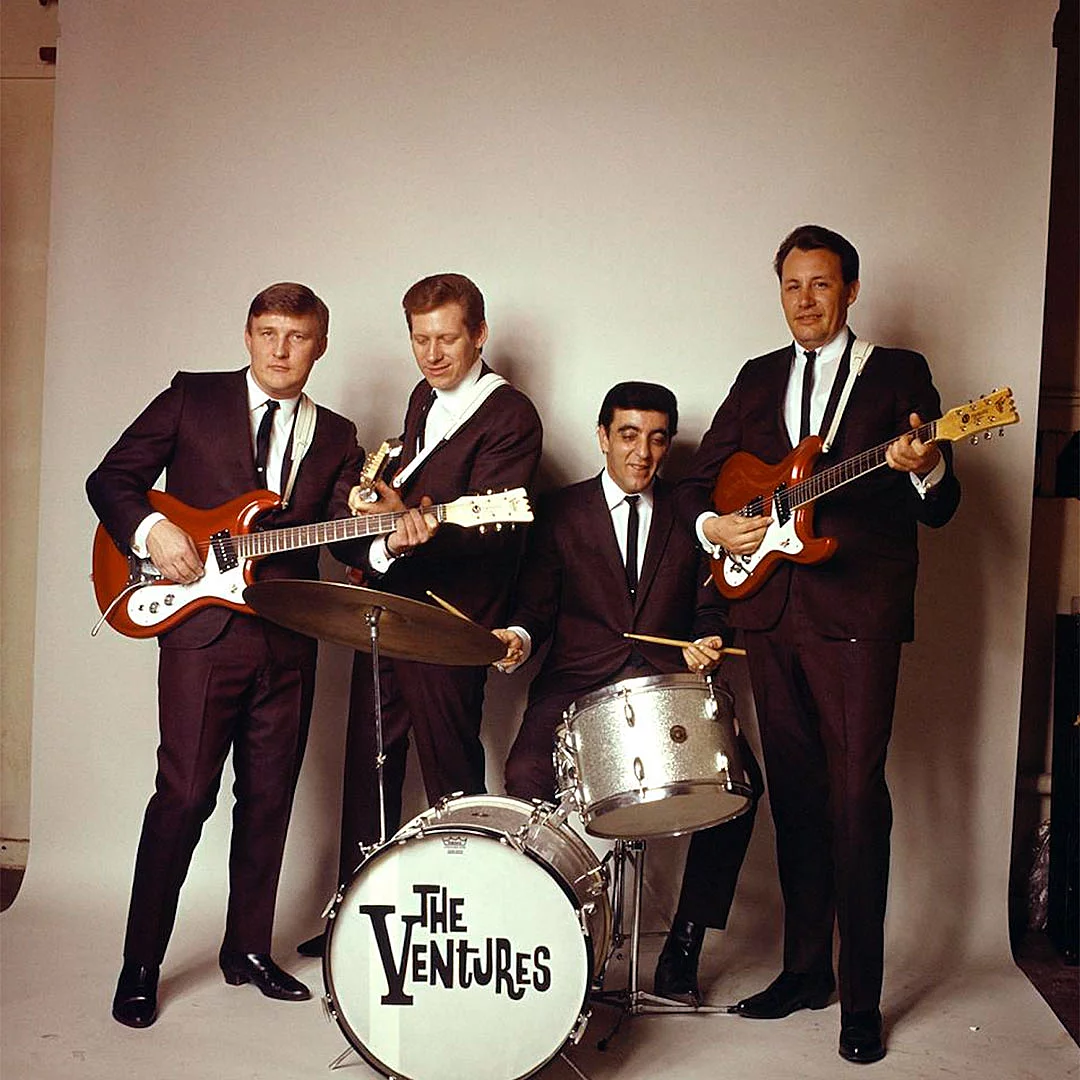

Okay, time for a mini-history of Mosrite. Some of these facts might be a tad off since it's all light-duty internet research. Anyway, Semie Moseley started his own guitar company after leaving Rickenbacker in the late 1940s or early 1950s. He got some finance and business help via a pastor named Wayne Boatright - which his how the name came to be - it's and amantopiea of "Moseley" and "Boatright" - ie MOSRITE. In the 1950's he had a story that almost sounds like my perpetual "garage luthery" story of my own - literally working out of a toolshed in someone's backyard getting the company started. Toward the end of the 50's as his guitars got better, he started getting some celebrity endorsers such as Joe Maphis. However, the band/musicians that put the brand on the map were the Tacoma Washington Surf/Instrumental band - The Ventures. The Ventures worked with MOseley on Mosrite's flagship model - the "Ventures" model, which spawned spinoffs known as the "Ventures II" (used by Johnny Ramone), the Mark IV and Mark V (used by Ricky Wilson of the B-52s, and marketed under the barnd "Gospel" later on and used by Kurt Cobain). That's what this build is based on. Semie had a LOT of ups and downs in the industry, coming and going every so often until his passing, after which, his DAUGHTER has taken over the company as he taught her the business and luthier skills as well. BTW, I chose that album cover cause the surfer chick on it is hawt to go with those Mosrite headstocks, LOL. 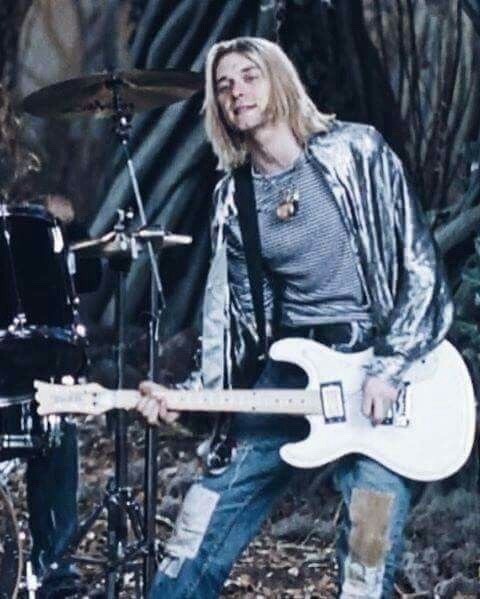
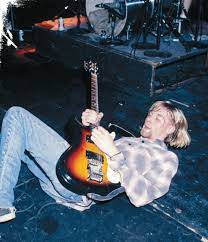
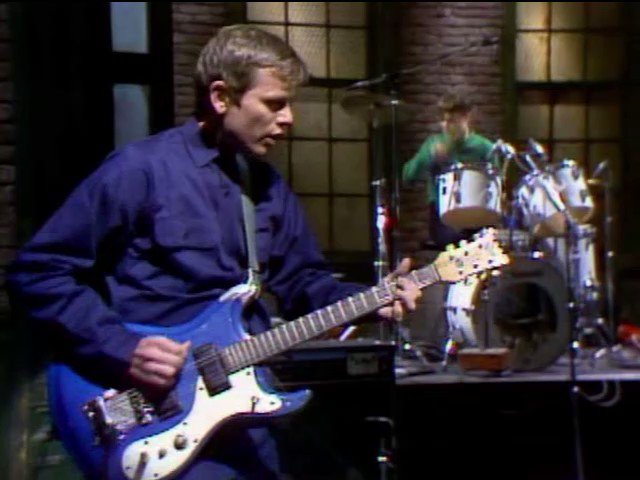
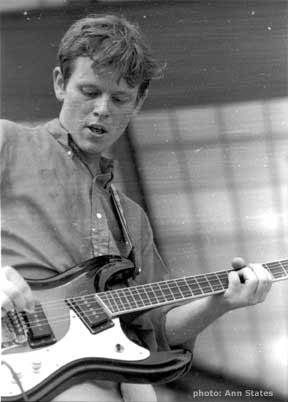 Here's the real "inspirations" behind this build - Kurt's Phase IV Univox, late sixties "Gospel" Mark V, Ricky Wilson's BLue Mark V, and Ricky Wilson's burst Ventures. It's obviously Kurt Cobain and Ricky Wilson were major influences on this project. I was in a huge B-52's phase at the time and studying Ricky's unorthodox playing techniques and tunings, and had been a huge Nirvana fan since way way back. See, I never though I could find nor afford not even a cheap copy! Copies of these guitars are even harder to come across. Univox used to make a model called the "Hi-Flier" that Kurt Cobain of Nirvana used a lot, but because Kurt used them, they are now over $500+ and impossible to find in the wild (and him smashing them didn't help much either). I'm still kicking myself for missing out on a $384 Hi-Flier in 2005 at Tommy's Guitar Shop in Everett. Sure, Eastwood makes copies, but they too are $400+. There are other copies as well that are not as accurate. Which leads to the final reason why - why put myself through so much waiting and torment when I can BUILD a copy myself. When you have 32 guitars on the rack and enough curves to work off of to create a Mosrite-like body yourself for $15....why spend anything more? Plus I had a stock pile of used parts - a wonderbar, 4 humbuckers to pick from (EMG and First Act), and a Kay KE-17 neck. And of course, having to work from pictures and shapes of other guitars alone to make this, means I really ended up with an ORIGINAL body style that eminates the SPIRIT of an old Mosrite Mark V, but makes some improvements.Pre-Planning - the Mockup  So we start with this mockup I made using a Mark V with a Kay KE-17 neck, as I knew that was the neck I wanted to use. The KE-17 necks are very skinny, and very flat, and that "butterknife" headstock KAy used goes really well with the looks of a Mosrite - as I wanted a six-a-side headstock instead of a 3x3, and wanted to avoid making a new neck. So we start with this mockup I made using a Mark V with a Kay KE-17 neck, as I knew that was the neck I wanted to use. The KE-17 necks are very skinny, and very flat, and that "butterknife" headstock KAy used goes really well with the looks of a Mosrite - as I wanted a six-a-side headstock instead of a 3x3, and wanted to avoid making a new neck.
Basically, the idea initially was 2 EMG Humbuckers that I had laying around (60 in the bridge, and an H in the neck - to emulate the LOOK of the Mark V), Washburn Wonderbar, Kahler Tremolo, and a white pickguard with a blue finish. I did not own any other "Blue" guitars in an actual "blue blue" color at the time. I just had my Sonic Blue Jag-Stang and Sonic Blue Musicmaster guitars. I did the mockup in microsoft paint since there's no "Flash" programs anymore on the internet and no way for me to make something that looked like this using any of the builders that ARE around (like Kiesake Image Modeler or the Offset Dressing Room). Also, I would have to do a lot more wood working. For awhile, this was jhust a "pipe dream" guitar that I designed but believed after my time studying the B-52's music was over, I'd just give up on it and move back to my old mainstays - boy how wrong I was on this one. Isn't that how it works though.....you think you'll do nothing with something, next thing you know it happens, or you plan something big and elaborate, and it never gets started. Yeah, that's kind of how these things happen with me, it's kind of irritating.Body Design  I started the body design by tracing my DiMarzio bodied strat upside down and backwards over the $15 "tablestock" pine that I had. I use pine for bodies because I like it's light weight, yellow color, and it's dense enough to give good sustain, while allowing for some really nice resonance. The gameplan was to cut the stock in half because it's double the length I need, and 2 layers glued and screwed together would allow me to finish building the guitar body quickly - before the wife was home in a few days. So I did the initial shape, then did a rought layout.
I started the body design by tracing my DiMarzio bodied strat upside down and backwards over the $15 "tablestock" pine that I had. I use pine for bodies because I like it's light weight, yellow color, and it's dense enough to give good sustain, while allowing for some really nice resonance. The gameplan was to cut the stock in half because it's double the length I need, and 2 layers glued and screwed together would allow me to finish building the guitar body quickly - before the wife was home in a few days. So I did the initial shape, then did a rought layout.
The cutting process started with me using a Irwin flat-pull saw made for sawing dowels flush with the wood to quickly rough out the body. Then the more fine aspects were done with a coarse blade on a coping saw to get the shape right. No power tools were involved in the initial production of this semi-original body design. Then it was HAND SCULPTED using coarse, 60 grit, sandpaper, and smoothed out sanding up to 320 grit. Laying out the Components & Pickup Changes 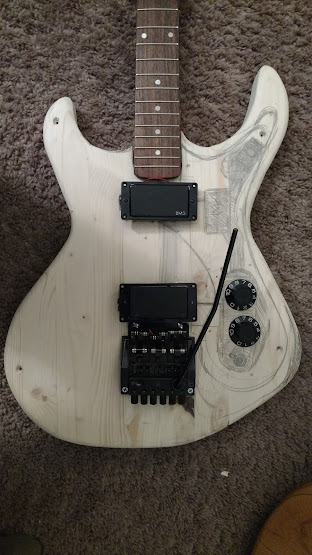 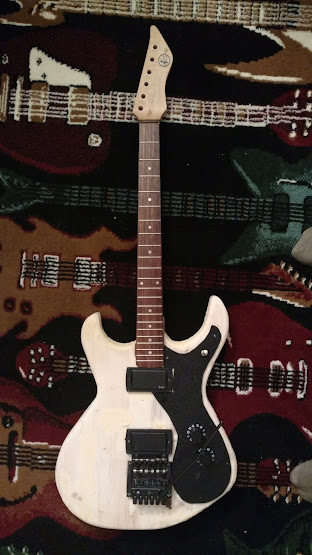 Initially, the neck was going to stick out much further from the body, because I wanted better fret clearance than Ricky's Mark V. Any time I build a guitar body from scratch, I consider what I am going to do as a player, and what would work best for me. But the thing was, I also really liked that sort of "full body occupied" aesthetic of the deeper set neck on the Mark V and the fact that having more "meat" around the neck slot would keep the neck steady and prevent shifting in position.
Initially, the neck was going to stick out much further from the body, because I wanted better fret clearance than Ricky's Mark V. Any time I build a guitar body from scratch, I consider what I am going to do as a player, and what would work best for me. But the thing was, I also really liked that sort of "full body occupied" aesthetic of the deeper set neck on the Mark V and the fact that having more "meat" around the neck slot would keep the neck steady and prevent shifting in position.
See, Ricky had no problem with upper fret access because he hardly used the upper frets of the guitar - he stayed in the Money Zone 90% of the time - below the 12th fret. Ditto Kurt Cobain who used the Gospel version of Ricky's guitar. So upper fret access was not an issue for them - for me though - someone who was probably going to be playing something more like "Eruption" or "Blackstar" on this thing after playing "Rock Lobster" or "About a Girl" - means that the guitar needs at least passable upper fret access - so a compromise was made - the neck was set further in, but just out enough to give my chonky and long Nightmare Animatronic hands the room to bend and squeal up around the 22nd fret like the quasi-poodle-hair shredder guy I also am. Another design consideration was not moving the bridge pickup during this change, because it actually serves a real purpose. See, this guitar basically the cross-pollination of a Superstrat and a Mosrite. A "Super-Mosrite" if you will - the only other one than Robin or Chandler were selling in the late 80's (left) - and mines a lot cooler in some respects. One of these being that I considered TONE quite a bit here. I could have decided to shuffle the bridge pickup forward for that typical fat, woody, guitar tone that every other 25.5" scale 22 fret shred guitar has, but not here. I wanted this thing to truly keep more of it's "Mosrite" pedigree - and Mosrite's have one thing in common with shred guitars - hot pickups - but they are single coils. So I left that bridge pickup smack-dab against the Washburn Wonderbar Tremolo - so far that the bridge saddles can reach OVER the trim ring (LOL). This gives it a very high gain tone, due to it being a 16.5K Ohm Ceramic Humbucker - but it also gives it a LOT of twang for a shred guitar. This decision was made, however, AFTER I chose to switch to First ACt Pickups.
for knobs, I picked these REALLY cool 1970's style project knobs from Vetco. They are like giant Witch Hats with the spindle being the size of a Gibson Speed Knob (!!!). For the trem, I decided the Washburn Wonderbar was the vibrato of choice for this axe. Turns out it was a rather fitting choice for a vibrato, for multiple reasons. First off, Semie Moseley's original "Vibramute" tailpiece on the original Ventures guitars had the strings attach in a diagonal pattern in groups of three - this was to make the guitar (somewhat) capable of bending chords up and down - like a Steinberger Trans Trem is supposed to do (except without those blasted "calibrated" double ball end, special purpose strings). The second part of this though - was the main inspiration - Ricky Wilson - who used TONS of Alternate Tunings. This guitar is a frigggin tuning monster because of this vibrato. With standard nickel non-slinky strings like bullets or really cheap Dunlops, the guitar can drop it's pitch in tune with each other - AND with fine tuners at the bridge that have a wide swath, it makes it really stealth to drop the tuning on this guitar or change it without making it super obvious on stage. I can also drop the overall tuning down (for the most part). Plans to get a string set together to make this thing basically a "Trans Trem Capable" guitar are in the works. With all that together, all that was left were the machine heads, which I already knew I was willing to throw down the $40-60 for a set of black H-mount or press-fit F-mount Kluson REvolution Machine heads with Safe-T posts. These are just my personal favorite. For the string path, I opted to use NO string retainers because the breakover over the nut is more than adequate - one of two features I lifted from Paul Dean's dean machine fo rthis guitar - no string trees, and the black anti-scratch pickguard...because the material looks cool, and it's cheap. By the time it was strung up the first time - before I had the electronics designed fully mind you (you can even see in the routing pictures there's a spot for a 9volt for the EMG's that never got used), I was already liking what I had going. I leveled and recrowned the frets on the Kay KE-17 neck, which is very thin and very flat - like a Mustang neck merged with the Paul Dean's neck, but with the right kind of kitschy 60's goofey headstock (the "butter knife" as they call it) that would fit right in on a guitar at a B-52s gig.Electronics Design The electronics on this guitar were the first time I really "modified" any pickups. First Act made their inexpensive humbuckers without a 4-conductor cable - little surprise, these were wired into really simple electric guitaras (ME-series electrics from Wally World). These guitars were almost all single pickup 1 volume 1 tone affairs that retailed for $100 and under. But the pickups are excellent. 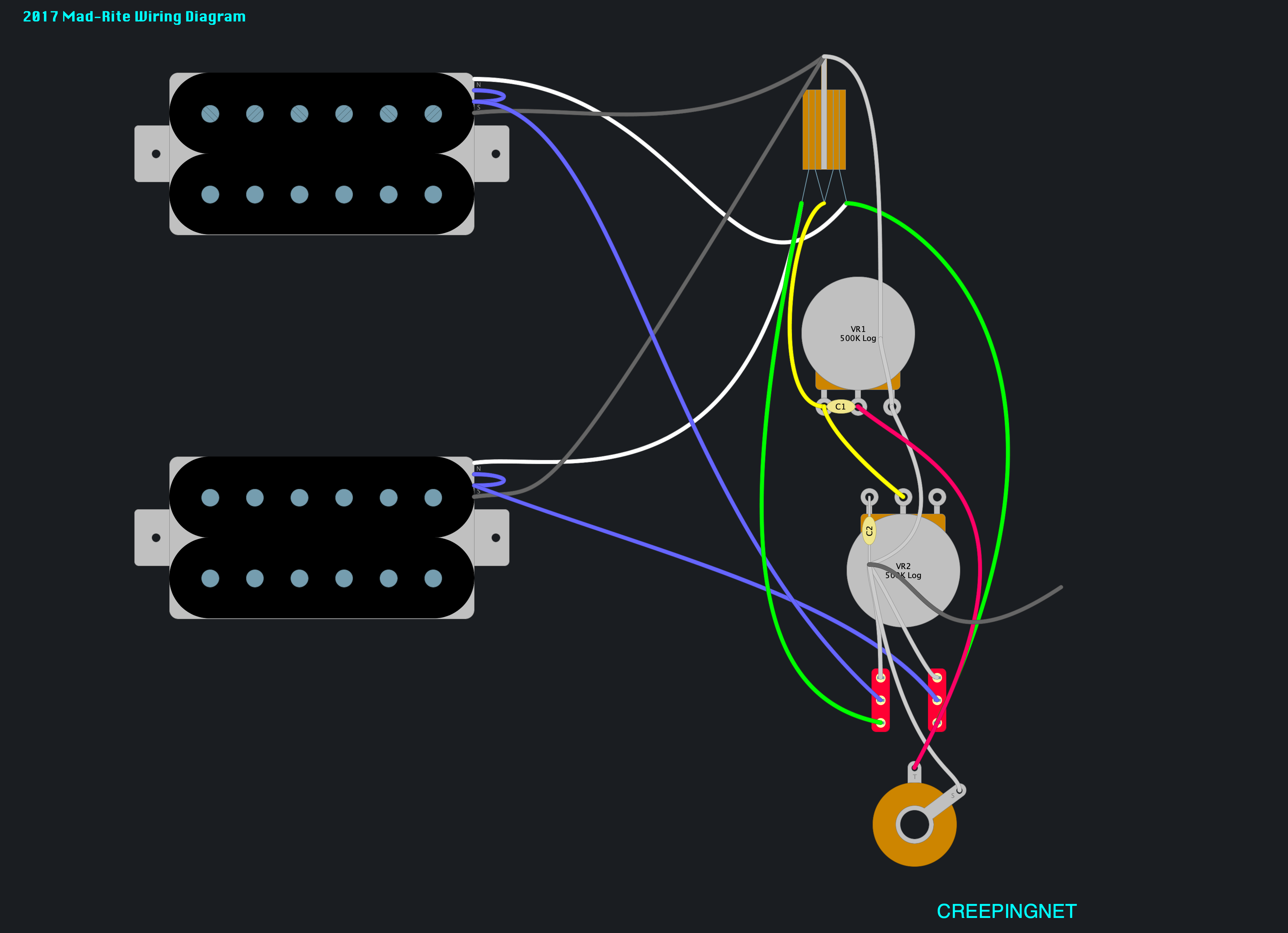
The neck position is an 8.4K ohm ceramic out of a ME-437 (Decoupage #1), and the bridge is a 16K Ohm Humbucker out of a ME-636/222 Adam Levine promoted model. Both of these lacked the Series Link, so I took some wire, wired it to the series link, and then that links up to the next special feature. This was also my first guitar to use "tri-mode" switching on more than one pickup. I developed this originally, to get three sounds out of a single pickup guitar - by way of wiring the Series Link so that it either runs parallel with the primary coil that's always active, runs in series, or is split. And the wiring is hilariously simple. This made the wiring a bit more complex, because now I had 2 on/off/on toggles located behind the tone control for each pickup - one per pickup - and these would give the guitar an insane tonal matrix - 15 different sounds in tonal - from a TWO pickup guitar. Up is parallel, middle is series, down is split. MadRite prototype Tonal Matrix
As we can see, the general rule of thumb is that the split modes give a more "Stratocaster-like" delivery, while the split positions make it more like a "Mosrite", and the hubucker positions still sound very Mosrite-like but fattened up. Just from this particular set of controls alone we have a Strat, Tele, Tele Deluxe, Tele Custom, Mosrite, Jaguar, and a bit of STeinberger thrown in. That's a pretty wild variety of guitar-ish tones to have in one instrument. The rest of the circuit though is pretty standard - Gibson 3-way switch, 500K logarithmic pots with a Treble Bypass on the master volume and a standard tone control. The Road Test - The Sweaty Vedders In the video above, around 0:38, you see the first show of the MadRite guitar. Honestly, I think I hit this one out of the park because it sounds mean as f***! We were playing 90's covers and at that show the video does not do the tone justice. later in the video you see it post-the-refinish below (this guitar has had 2 since then). The only *issue* is people telling me how it looked "home made" and that garnered a mixture of opinions from it looking unfinished and needing a finish to protect the wood, to people wondering if I'll ever put it into production, lol.Blue Paint Job - Solarez Experiment   In mid 2019 the MadRite was refinished into a transparent blue color for awhile.
In mid 2019 the MadRite was refinished into a transparent blue color for awhile.
I'd gotten some cheap as crap powder acrylic paints in a four pack from Michael's and decided to try the blue one as a stain o the guitar. I really like the color (it's one of the colors in the running on the Paul Dean Style Build. It also would bring the guitar closer to Ricky's Mark V in color. I had found out about a UV cure resin called "Solarez" to try out as a clearcoat. So we bought some on Amazon, and the madrite was refinished in this color. So the body was sanded, and then refinished in Solarez. The problem with Solarez though, especially living in a sunny place, is that it cures too damn fast, I mean, even UV rays leaking into the storage behind my apartment were causing it to cure too fast for me to finish it well. So it kinda' looked crappy up close. But it did have a pretty nice look onstage. Toward the end of my time in Murderock as Mikey Ferox, the guitar was used with the Animatronic Head version of that character towards the end. I was planning to later build a more tattered one using wood found in the abandoned field near my apartment, but I built the Van-Halen II Tribute instead because by the time that opportunity came, the pandemic was in full swing, and Mikey Ferox was no longer a *thing* anymore. After these photos I used the guitar like this for awhile and then decided after awhile that I missed the old natural finish. So I decided to return it back, but with some proper wood protection on it.Back in Bare Wood - But Varnished (Plus some body refinements) 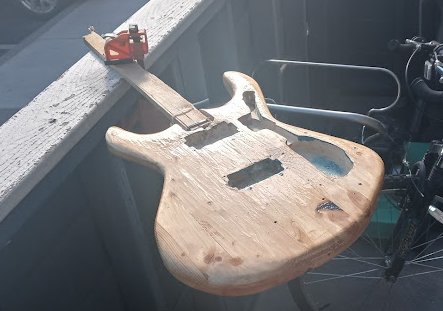 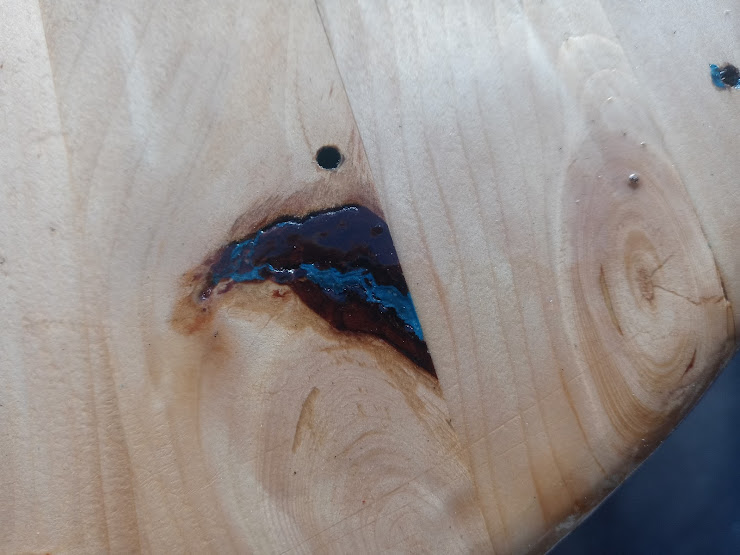 In mid 2023, the Madrite went through a quick revision and new paintjob. The Solarez blue paintjob was removed, with a small "Jewel" of the blue acrylic "stain" remaining. and then the body was slightly reshaped with a tool I did not have when I started - a drum sander. So the body horns area, where there were some square artifacts from hand-cutting the body, were sanded out and smoothed out into a more "production friendly" body shape. This was also used to break the very solild and durable "Solarez" clearcoat off, so I could clear it all off, and refinish with a clear wipe-on Shellac instead. This also refined the horns and made them a little pointier - which I like - anything to differentiate it from a real mosrite guitar.
In mid 2023, the Madrite went through a quick revision and new paintjob. The Solarez blue paintjob was removed, with a small "Jewel" of the blue acrylic "stain" remaining. and then the body was slightly reshaped with a tool I did not have when I started - a drum sander. So the body horns area, where there were some square artifacts from hand-cutting the body, were sanded out and smoothed out into a more "production friendly" body shape. This was also used to break the very solild and durable "Solarez" clearcoat off, so I could clear it all off, and refinish with a clear wipe-on Shellac instead. This also refined the horns and made them a little pointier - which I like - anything to differentiate it from a real mosrite guitar.
I have tried some Ernie Ball Paradigms on it, but Ernie Ball Super Slinky Strings, in and of themselves, don't really have the same tightness of other strings required to allow the jowls of the Wonderbar to be calibrated properly. I got it real close, doing strings in groups of two, but it's still not that good. There's just soo much of a variance in the core-wires of the wrapped strings, and so much variance between the unwound in their stretchiness that I think this guitar will need to go back to Dunlop strings at some point....probably after I finish rebuilding the Dean ML-X. |